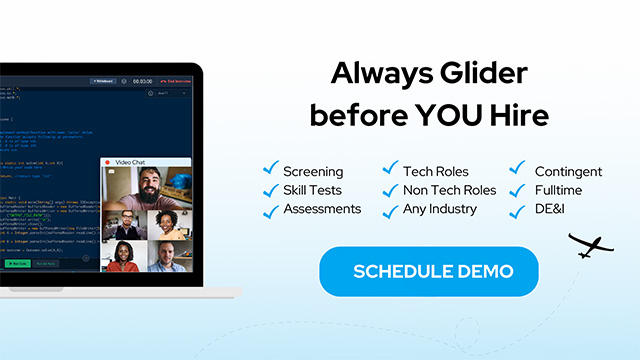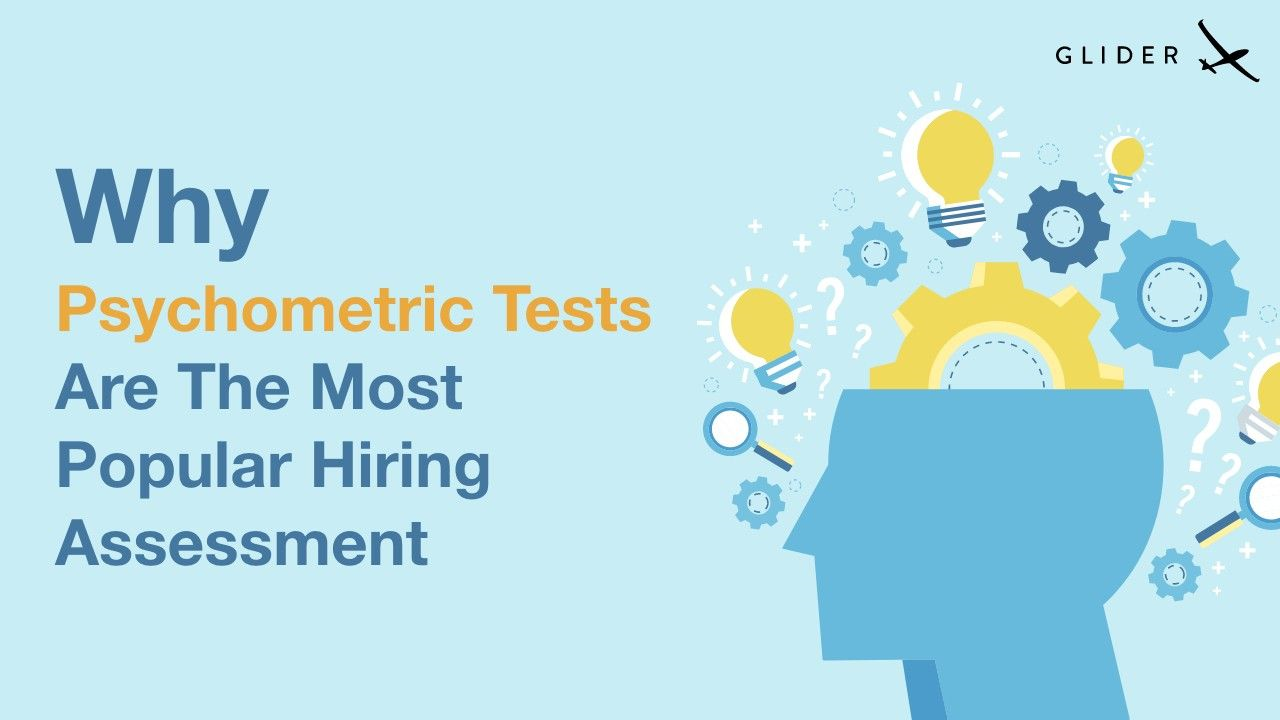
The traditional HR technologies have undergone a paradigm shift since the onset of the global pandemic. Covid-19 has ushered new work norms from talent acquisition to remote work facilities all aligned with health and safety norms. Little wonder, talent intelligence companies like Glider AI are boosting the recruitment process and setting a benchmark for other companies.
Having said that, it doesn’t mean everything is well in the remote recruitment practices. Many companies have witnessed a steep rise in fraudulent or malpractices in candidate’s assessments. Recruitment experts opine that the advent of the global pandemic has been a major game-changer, but at a price to pay.
It should be noted that between the end of 2020 to the first half of 2021, Glider Talent Intelligence has tracked a 92 percent increase in fraudulent test tracking activities. Furthermore, the AI-enabled proctoring features captured that, on average, 23 percent of the candidates engaged in some assessment malpractice.
No sooner than this statistic was released by Glider AI, we put our brains to work and write this content. Throughout this blog, we shall cover nuances surrounding fraudulent practices in remote assessments, costs of a bad hire, recruitment automation, and most importantly Glider’s remote proctoring tools and their features.
With the virtual hiring practices becoming inevitable, due to the onslaught of Covid-19, candidates are finding newer ways to cheat online assessments. Surveys after surveys have noticed amplified fraudulent behaviors or malpractices since last year. This is a concern for recruiters that must be immediately dealt with.
Moral Authority is priceless. So is a candidate’s honesty. The Conference Board Annual Survey of 2021says recruiting and retaining top-quality talent is the top priority for CEOs and executive suites globally. This was also true for the years 2020 and 2019. of the entire executive suite. Also, the workforce crunch has led to severe demand for quality talent and contingent tech talent.
Taking undue advantage of the situation, many applicants and candidates are committing frauds, malpractices, and professional misconduct while they take up virtual assessments. There are instances where a candidate’s resume is all about a fancy tale or increased numbers of candidates or recruiter ghosting globally.
Like the secrets hidden in plain sight, some of the infamous ways of how candidates cook up a fake dish to grab a job are:
It’s expensive to hire the wrong people. But it’s disastrous to hire candidates who lack integrity. Like buyer’s remorse, despite all the rationality and technological assessments, organizations end up hiring unsuitable candidates. What happens if the ‘good fit’ is missing? Negligent hiring has huge ripple effects than one can imagine.
“A hiring mistake can cost up to five times the bad hire’s annual salary.” – SHRM
As per a LinkedIn article, poor performers drain away a great amount of financial and intellectual resources, causing losses in profitability and productivity.
Simply terminating the mis-hired candidate is neither an answer nor a solution. It doesn’t fill the loopholes in reality. Research from Recruiting and Employment Confederation says, hiring mistakes lead to grave financial losses in terms of training, productivity loss, and increased staff turnover.
A similar report by Northwestern reveals that 74 percent of the hiring managers believe they have made a wrong hire. According to an estimate by the U.S. Department of Labor, the average cost of a bad hire is more than 30 percent of the individual’s first-year earnings.
Let’s discuss the obvious first. How do organizations make a wrong hire?
The HBR article on recruiting tells us that companies who do their own recruitment and hiring activities to fill job openings are largely left to figure out job descriptions and job advertisements for themselves. This is one of the several root causes for hiring the wrong candidate. The others are:
In his book, “High Velocity Hiring: How to Hire Top Talent In An Instant”, author Scott Wintrip says adding recruitment automation help organizations in multiple ways, from candidate sourcing to employee onboarding and from chatbot interactions to predictive analytics.
Recruitment automation is more than just chatbots. A Google search on “Recruitment Automation” gives us more than 6.64 billion results. A study by McKinsey estimates online recruitment technology can boost world GDP by $2.7 trillion by 2025.
Recruitment automation is the usage of automated software to support and enhance recruitment processes. Automation helps recruiters get rid of repetitive, manual, and tedious work processes and focus on productive strategies.
Sparked by the uncertainty unleashed by Covid-19, the world of recruitment has seen a massive increase in virtual assessments of candidates. At the same time, recruiters are finding it hard to hire candidates through virtual assessments alone. Like a true friend, talent intelligence companies like Glider AI help recruiters to look beyond the assessments alone. Tools based on remote proctoring and automated monitoring empower recruiters to weigh a candidate’s honesty and transparency along with skills and assessment scores.
Glider AI is one of the leaders in recruitment automation and talent intelligence industry. Recruiting digital talent or the future of work is made easy and efficient by Glider’s automation features like automated monitoring, comprehensive monitoring report, and auto-flags cheating. The remote proctoring mechanism makes it easy for recruiters to monitor the candidate’s behavior from start to the end of the assessment duration.
Glider’s AI tools and talent analytics are built on the premise that candidate assessment should be based only on the skills required to do the job. Everything else is just noise.
Besides, Glider’s assessment and remote proctoring tools are complaint with EEOC, ADA, and GDPR guidelines. This makes sure that Glider’s platforms work through permissions. It means no information is gathered other than what is provided by the candidate at the time of assessments.
As the name says, the automated monitoring system by Glider takes extreme steps to ensure the authenticity of candidates while keeping a close eye to prevent fraudulent activities during assessments. The advanced and robust online proctoring make use of webcam and screen recorders. These tools facilitate recruiters to track and monitor candidate’s activities all through his/her assessment duration.
Face Detection
The mechanism of Glider’s face detection flags multiple faces in the frame and also instances of a candidate’s looking or turning away from the screen or even real-time eye tracking. Additionally, the candidate’s image is captured at the beginning of the assessment, so that the facial key points remain matched while he/she is taking the assessment. This is done to keep impersonation in check at all times.
Tracking Candidate’s Activity
Switching tabs on the browser is one of the commonest fraudulent activities committed by candidates during a virtual assessment. It is done for the sake of either sourcing a solution on the web or copy-pasting from different online sources.
Through Glider’s automated monitoring system, recruiters can prohibit a candidate’s movement from his/her assessment area. For example, Glider allows the recruiter to set the tab switch count. Upon exceeding the count, the candidate is auto-disqualified. At the end of the assessment, recruiters can access a detailed activity report and review.
This is the second highlight of Glider’s remote proctoring system. The monitoring report sheds light on candidate’s activity (every one of them), so that probable cheating activities are monitored. The report also enables hiring teams to make unbiased and informed decisions on the candidate. Glider’s monitoring report comes in two kinds:
Cheating Report
It captures every minute detail of all those copy-pasted snippets with the event of time. It equips recruiters to filter out genuine candidates from deceiving ones. Recruiters can also build a pipeline of quality talent based on this report, thus saving a great deal of time.
Code Plagiarism Check
With its investigative eyes, Glider can see through copied codes and explore the plagiarism sources on the web. Not only that, the plagiarism check can cross-check similar codes against the submitted ones to review the code’s uniqueness. So, either way, the plagiarism is kept under scrutiny.
Glider’s remote proctoring system is intensely data-driven. Through an auto-flagging algorithm, candidate’s activities are thoroughly captured and assessed. Two of its striking features are:
Auto-flag Suspicious Activities
Thanks to Glider’s proven video recording feature, the candidate is recorded all through the assessment. Recruiters can easily capture fraudulent or misleading submissions. Glider auto-flags multiple faces or impersonations that are detected on the screen.
Audit trail with Audio and Video Recording
The interesting part of Glider’s proctoring report is the ‘accessible anywhere anytime’ recording of the visual and acoustic environment of the candidate’s location. Recruiters can review the report with a complete audio and video trail that covers elements such as skill reports, monitoring, plagiarism reports, video, and screen recording.
Technology is only an enabler, never the strategy itself. Contrary to the myth that AI perpetuates unconscious bias in hiring decisions, Glider AI does not let the system decide. It only troubleshoots the frauds and deceits. The recruiters are presented with the explainable findings so that the ultimate decision of talent recruiting lies in the hands of the hiring team always.



